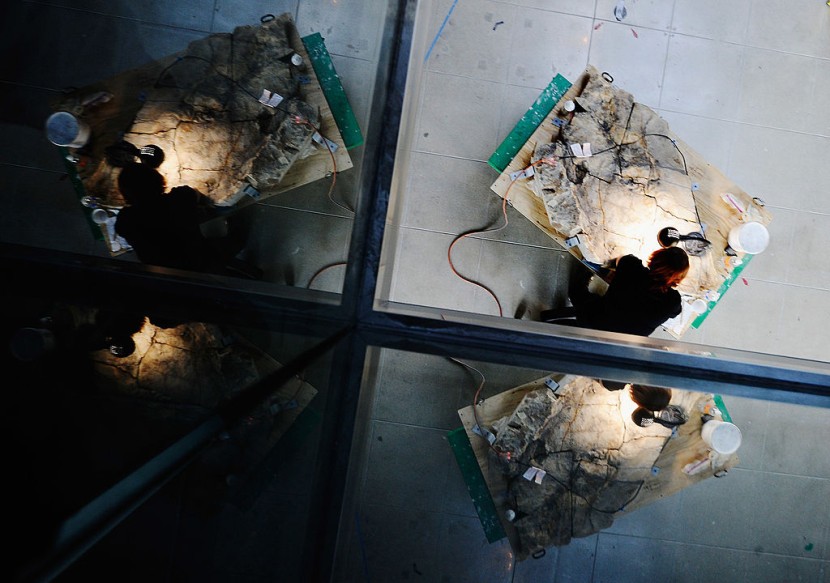
A 4-year-old girl on a beach walk came across a remarkably well-preserved dinosaur footprint that stretches back 220 million years.
In December, Lily Wilder was taking a stroll at Bendricks Bay near Barry in south Wales when she stumbled upon the footprint in a loose block sitting near the ocean, according to Amgueddfa Cymru National Museum Wales.
The discovery has thrilled paleontologists across the globe.
According to the girl's mother, Sally Wilder, "It was on a low rock, shoulder height for Lily, and she just spotted it and said, 'Look, Daddy,'" reported NBC News.
Wilder, an engineer, said, "She is really excited but doesn't quite grasp how amazing it is." She added her husband took photos at the beach shared the photos with the family.
The dinosaur footprint is reported "the finest impression found in Britain in a decade." Lily Wilder's discovery could help scientists decipher how dinosaurs walked since it is a 220 million-year-old footprint.
Wilder used to be afraid of dinosaurs. Now, the preschooler carries a toy Tyrannosaurus rex everywhere she goes, waiting when she can see her discovery in a museum, alongside a plaque with her name on it.
The footprint is from a beach known for footprints from crocodilians, extinct ancestors of modern crocodiles. The dinosaur that made the print is presumed to have stood 30 inches (75 centimeters) tall and 8.2 feet (2.5 meters) long.
Wilder's grandmother recommended for them to show the photos to local fossil experts for further probing.
According to Cindy Howells, a paleontology curator with Amgueddfa Cymru - National Museum of Wales, they could garner information from the size and look of the footprint, but it was almost not possible to identify the type of dinosaur that left the "grallator" - a small, three-toed print made by a myriad of bipedal dinosaurs.
Also Read : New Dinosaur Species Dated Back to 125 Million Years Discovered in China in Perfect 'Life-like' Postures
After Wilder discovered the footprint, special permission was received from Natural Resources Wales to legally remove it.
The dinosaur footprint will be extracted this week and be transferred to the National Museum Cardiff, where it will be preserved.
Sally Wilder added, "When Richard came home and showed me the photograph, I thought it looked amazing. Richard thought it was too good to be true. I was put in touch with experts who took it from there," reported People.
The spot is acclaimed for dinosaur footprints, but Wilder's discovery turned out to be "the best specimen ever found on this beach," according to Cindy Howells, the museum's paleontology curator.
Wilder's mother also said, "You can actually really see the claws and the joints and the fingerprints. Apparently it tells them a lot about the dinosaur, it's amazing how much they can learn from just a footprint," reported Ruptly.
Bendrick Bay's rocks where the print was cut out and removed by a team from Amgueddfa Cymru National Museum of Wales could be seen.
According to Howells, t would have been a thin animal that walked on its hind feet. Unfortunately, there are no fossilized bones to match the print, although similar footprints had been found in the United States.
© 2026 HNGN, All rights reserved. Do not reproduce without permission.








